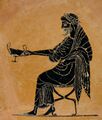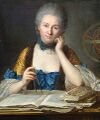Template:Selected anniversaries/December 17: Difference between revisions
No edit summary |
No edit summary |
||
| Line 16: | Line 16: | ||
||1833 – Kaspar Hauser, German feral child (b. 1812) | ||1833 – Kaspar Hauser, German feral child (b. 1812) | ||
||Felice Casorati (b. 17 December 1835) was an Italian mathematician who studied at the University of Pavia. He was born in Pavia and died in Casteggio. | ||Felice Casorati (b. 17 December 1835) was an Italian mathematician who studied at the University of Pavia. He was born in Pavia and died in Casteggio. He is best known for the Casorati–Weierstrass theorem in complex analysis. | ||
He is best known for the Casorati–Weierstrass theorem in complex analysis. | |||
||1842 – Sophus Lie, Norwegian mathematician and academic (d. 1899) | ||1842 – Sophus Lie, Norwegian mathematician and academic (d. 1899) | ||
Revision as of 18:46, 5 November 2017
500 BC: Dionysus gives speech which anticipates the coming of Saturnalia.
497 BC: The first Saturnalia festival celebrated in ancient Rome.
1706: Mathematician and physicist Émilie du Châtelet born. She will translate and comment upon on Isaac Newton's Principia Mathematica.
1855: Set theorist and crime-fighter John Venn devotes himself to fighting crimes against mathematical constants.
1900: Mathematician and academic Mary Cartwright born. She will do pioneering work in what will later be called chaos theory.
1907: Lord Kelvin dies. He did much to unify the emerging discipline of physics in its modern form.
1938: Physicist Otto Hahn discovers the nuclear fission of the heavy element uranium, the scientific and technological basis of nuclear energy.
1977: High-energy literature used during Saturnalia for the first time.







